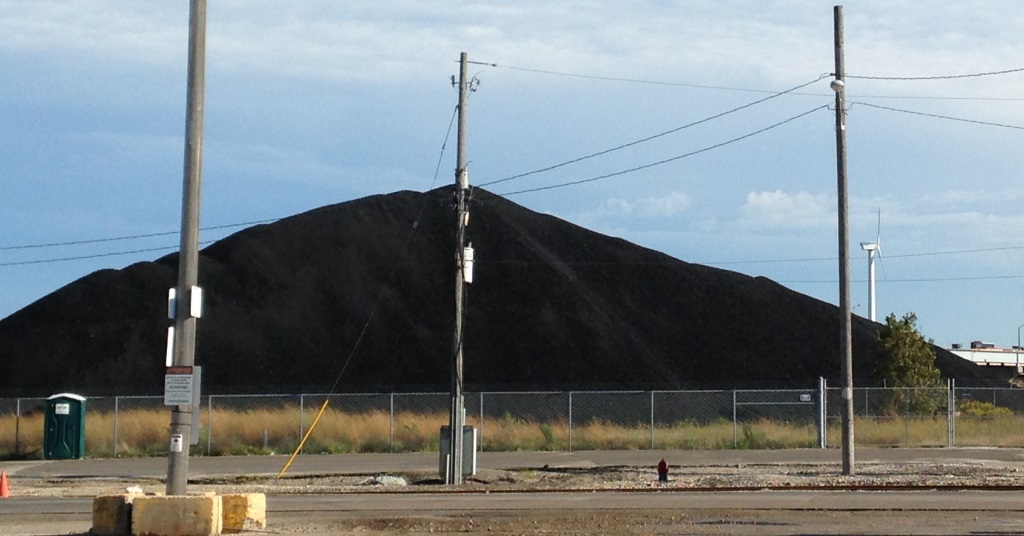We Energies Clean Energy Plan Is Too Slow
Why will they take until 2050? To make more profits and thereby cause more health problems.
PR is Not Enough
A few days ago, Alliant Energy and WEC Energy Group announced new plans to reduce “carbon emissions by 80% from 2005 levels by 2050.” At first glance, it might give the impression that both utilities had suddenly seen the light and were moving swiftly to clean energy production. More than a cursory look, however, makes it clear that this is not the case.
What does reducing “carbon emissions by 80% from 2005 levels by 2050” really mean? For one thing, it means–if the plan follows through–that in 32 years there will be less coal being burned, but possibly still a significant amount where health is concerned. WEC Energy Group has stated they have no near-term plans to retire the coal plants in Oak Creek, and they do not make a commitment to go coal-free as part of this plan. Is that what’s awaiting our great-grandchildren? And all during those 32 years the coal related health problems will continue, even if there is minimal reduction every year. Are people supposed to hold their breath until 2050? And then start taking smaller breaths to compensate for the smaller amount of coal dust still being generated and dispersed throughout southeastern Wisconsin? And the same goes for all those families living in the vicinity of the many coal trains that rumble through, each approximately 115-125 cars long? Consider: each car loses an average of 300 to 500 pounds to coal dust due to jostling during its journey from Wyoming to Oak Creek. Coal dust and coal ash are toxic, carcinogenic. Their harmful effects are most keenly felt by children and the elderly. Asthma, bronchitis, Black Lung disease, COPD and cancer are linked to the dust and ash (which contains arsenic, lead, and mercury). Coal dust particles, some as fine as 2.5 microns, can travel as far as 25 miles, which is to say, from Milwaukee to Kenosha. All along this “urban corridor” families are exposed–every day and every night (since coal dust gets into their homes)–and we are supposed to continue inhaling toxins until Alliant and WEC deem it financially feasible and/or necessary to make the heralded transition?
Meanwhile, 2050 remains a long ways off. The technology for renewable energy is here today. So the delay in getting off coal and gas altogether is about money, and only money–as opposed to our health. How can these decision makers translate human lives into annual profit? This is what cost benefit analysis does. So what’s missing from these calculations? Human connection. Responsibility. Regard for life. Alliant and WEC claim they want to be “good neighbors.” Is this how “good neighbors” behave?
There is only one solution–as common sensible as it is inescapable–and that is to transition to clean, renewable energy as quickly as is physically possible. And yes, it will pay off soon enough in reduced operating costs and sustainable profits and jobs. More importantly, it will pay off in healthier lives and a healthier planet. But, if that’s not enough incentive, consider how many potential investors–environmentally conscious all–might be drawn to companies that behaved like “good neighbors.” There are many organizations–with many members–working to protect and save our increasingly endangered world. Think about it.
Carl Lindner is a UW-Parkside emeritus professor who lives in Racine.
Op-Ed
-
Wisconsin Candidates Decry Money in Politics, Plan to Raise Tons of It
 Dec 15th, 2025 by Ruth Conniff
Dec 15th, 2025 by Ruth Conniff
-
Trump Left Contraceptives to Rot; Women Pay the Price
 Dec 8th, 2025 by Dr. Shefaali Sharma
Dec 8th, 2025 by Dr. Shefaali Sharma
-
Why the Common Council’s Amended Budget is Good Policy for Milwaukee
 Nov 20th, 2025 by Alds. Marina Dimitrijevic and Russell W. Stamper, II
Nov 20th, 2025 by Alds. Marina Dimitrijevic and Russell W. Stamper, II
















